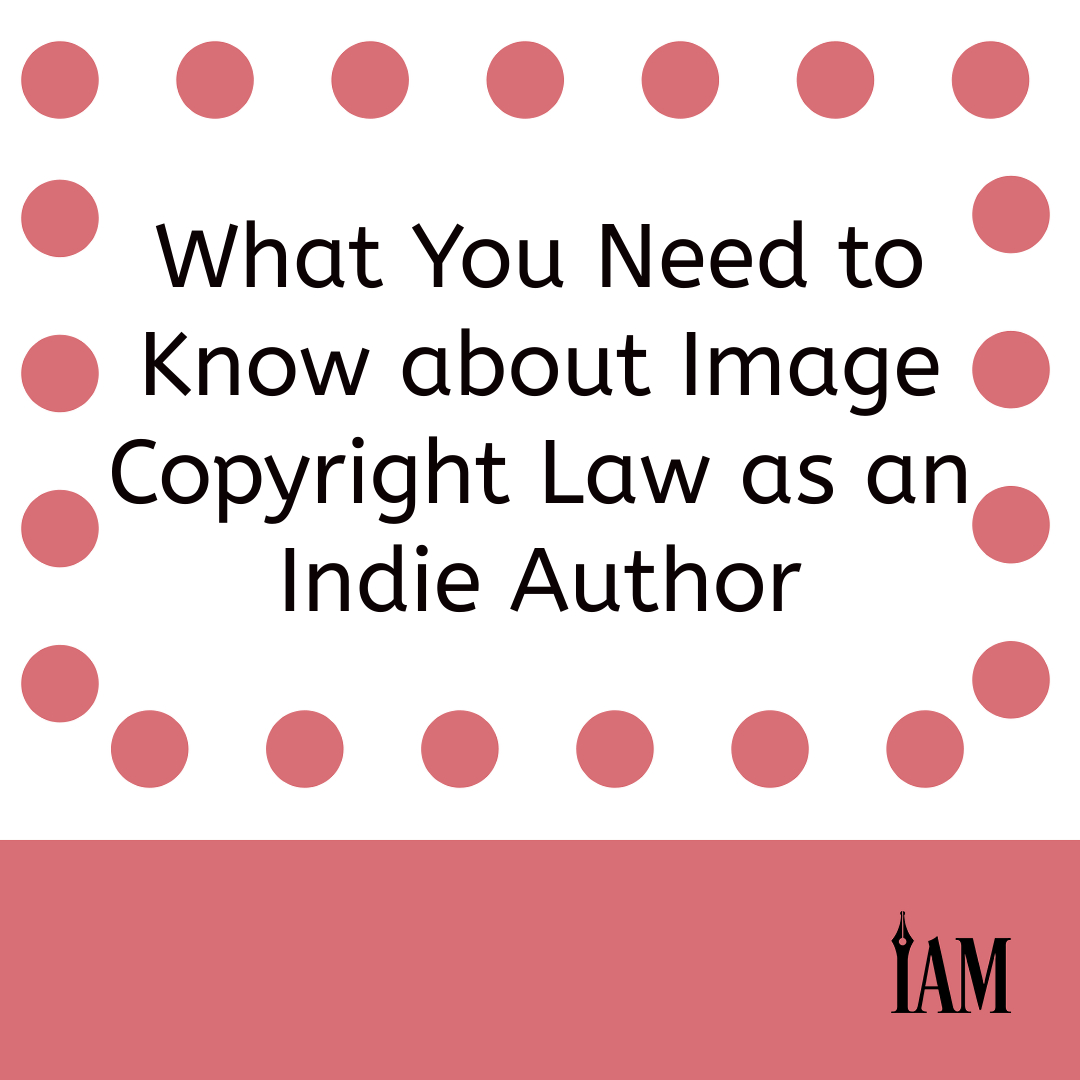Breaking Down the Complicated Lingo of Image Licensing
Note: The information provided here is not legal advice and should not be taken as such. It is meant for general education purposes only. Furthermore, these definitions are always subject to change; be sure to do your research and consult legal professionals if you have specific questions.
Authors need images for many purposes, including book covers, graphics, website images, printed marketing materials, and physical products. But just as your stories are copyrighted, images are copyrighted too, with a host of complex licensing that could trip you up. There are also companies that make a living from finding instances where images have been used without permission. To borrow a line from Liam Neeson’s character in Taken, they will look for you, they will find you, and while they won’t kill you, they will send you a huge fine or even take you to court, where you could get jail time.
So knowing the rights you have to an image is essential, as is understanding what various image licenses mean. However, there are ways to find images with clear licensing terms, so it’s easier to find what you want and use it for the right purposes.
What to Consider When Using Images
When searching for images to use, it can seem like there are as many stipulations for use as there are images on the internet. Every stock site, artist, and photographer will have their own licensing terms you’ll need to adhere to. You can usually find these terms on the image listing itself or often in the site’s footer. Language varies, but look for wording such as “Licensing,” “Terms and Conditions,” “How it Works,” or similar. Failing that, contact the help desk or the photographer or artist directly to confirm terms. Check what you can do with each image, then check again before you use it.
Be aware that even using an image on your author website, blog, newsletter, or social media is commercial use. It’s not just about if you’re directly making money from using the image. Also note that "images" means both photos and artistic works, as well as any graphs, charts, and other graphics you didn’t create.
How many copies can you use?
Sometimes, it’s not just about what permissions you have for a photograph. Some sites limit how many times you can use a particular image. If you’re thinking of using an image for your cover or for swag, you could find yourself in a position where you only have permission to use 5,000 copies of that image. Sell more than that, and you’d have to buy another license for that image, and again each time you reach the next 5,000-copy limit. There’s also no saying the price won’t go up. If you’re not careful, you could set yourself up for an admin nightmare.
Assume nothing
You can’t license an image commercially for your cover and assume you can also use it to create physical products, such as mugs, tote bags, or T-shirts. Sometimes that’s allowed, but usually you’ll need to pay for an extended commercial license for product creation. If your cover designer bought the image and you want them to create anything else for you, check whether they’ve bought the right license, as you may need to pay extra. If they bought the cover image but you want to create items from it, you will also need to buy the image, with the right license, before you can use it. Check license terms or contact the site, photographer, or artist if you want to use an image in ways that weren’t addressed in your initial agreement.
You aren’t the only one who can buy stock photos.
Unless you paid for an exclusive use license for an image, anyone may buy the same image from a stock photo site or a photographer and use it on their work too. Unless they’ve used it in the exact same way, with the same or very similar design elements, they are not copying you, and you can’t expect them to take their book down or replace the cover.
Image Licenses
It would be far simpler if there was just one type of image license, but that’s not the case. Here are the main license types and what you can do with them.
Royalty Free
A royalty-free license means you can buy the rights to an image from a site or photographer for a one-time fee. Unless there are any other restrictions listed, the only things you can’t do with that image are claim that you created it and resell it. This is one of the most straightforward licenses, where you can use an image, add to it, or manipulate it without violating copyright.
Creative Commons
Photographers and other creators can also release their work with a Creative Commons (CC) license. With this, the image creator can specify what you’re allowed to do with the image based on its license category. There are four main Creative Commons categories that can allow an image to be used commercially:
- With an Attribution license (CC BY), you can make new and different works from the original image and distribute it, as long as you credit the original creator.
- With an Attribution Share Alike No Derivatives license (CC BY-ND), you can distribute an image with credit to the creator, but you are not allowed to change it.
- With the Attribution Share Alike license (CC BY-SA), you can make new and different works from the original image, but you must credit the creator and issue the new work with the same license that the creator set.
Additionally, these categories have alternate licenses that offer the same rights and stipulations but only allow for non-commercial use. If your image carries a Creative Commons license, pay close attention to whether it includes an “NC,” or non-commercial, designation.
If an image is in the public domain (CC0), either it was never copyrighted to begin with or the copyright has expired. In some cases, creators also put their images into the public domain. You can use these images without permission and without payment, and you don’t need to cite where you got the image or give any credit, though attribution is typical.
Pro Tip: Many sites allow you to filter search results based on the specific licensing you're looking for. This is helpful, as you can filter out anything that can't be used commercially.
Rights-Managed Images
Similarly to royalty-free images, with rights-managed images, you can pay a site or photographer once to use their image. However, they are likely to specify how you can use the image, where you can use it, when, and what sizes you can use. Images with this license are more likely to be found on individual photographer and artist sites, as many want control over how their work is used.
Pro Tip: Save money by being clear and narrow about what you want the image for. The more uses and sizes you ask for, the more you’ll pay. You can always ask to increase usage later if you need it.
Where to Find Images
Here are just some sites where you can find quality images with clear licensing:
Depositphotos (https://depositphotos.com)
Depositphotos is a royalty-free site for stock images, videos, and music. Look for deals throughout the year that offer a hundred images for a single payment. We’ve seen everything from one hundred dollars for one hundred images down to thirty-five dollars for one hundred images if you buy via AppSumo (https://appsumo.com).
In addition, Depositphotos provides you with a PDF for each image showing your name and what you’ve bought, which is perfect for proving you have the right to use that image if you are asked.
Creative Fabrica (https://creativefabrica.com)
This site offers a cornucopia of fonts, embroidery, crafts, and graphics. Even better, they have just one license that applies across the site, so you don’t need to check individual image licenses. And the site’s help desk is responsive if you still have questions.
CreateHER Stock (https://createherstock.com)
This site solely focuses on royalty-free stock images of black women. Contact the site if you want to use their images for commercial use, as you will need to buy an extended license.
Also be aware of this caveat in their license terms: “All users acknowledge that CreateHER Stock and its Contributors do not make any representations or assurances of non-infringement and does not make claim to have received releases from any brands, designers, or manufacturers for use of products, registered trademarks, logos or intellectual property that may or may not be portrayed in images found on this platform.”
It may be best to only use images without products and brand logos from this site.
The Killion Group (previously Hot Damn Stock) (https://thekilliongroupimages.com)
Run by authors, The Killion Group carries stock images specifically tailored to Romance books of every subgenre. Photos in its royalty-free library include historical figures, paranormal elements, poses that are a little… hotter, and more.
You can also find creative commons images on sites like Flickr, and some museums and other companies, like the Metropolitan Museum of Art and NASA, offer selections of their own images for use, though of course, check their licensing.
How To Make Sure You Are Legally Using Images
- Use reputable image sites.
- Take your own photos or create your own artwork—then you own the copyright and can use or alter them however you wish.
- Buy images directly from a photographer or artist.
- Find out who owns the copyright on the image you want and ask permission.
- When using images on your website, blog, on social media, or in your newsletter, instead of using an image or embedding it, link to the image and credit the copyright holder. It might not look as pretty, but you will be on the right side of the copyright holder.
- Check what your license says and make sure you have permission for what you want.
No matter how you’re using images in your book business, it’s imperative you do your own research and check an image’s license and any terms and conditions for its use—even on a site you’ve used previously. And if you’re not sure, it’s always worth reaching out to the copyright holder to clarify what you can do. Better to have permission than to face a huge fine and potential court case.










